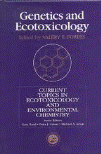Papers in the Biological Sciences
Influence of biotransformation on trophic transfer of the PAH, fluoranthene
Copyright © 2006 Elsevier B.V. Used by permission.
Abstract
The persistence of polycyclic aromatic hydrocarbons (PAHs) in marine sediments may be influenced by benthic invertebrate bioturbation. Through processes such as deposit-feeding and enhancement of microbial metabolic activity PAHs may be remobilized from the sediment compartment, and either transferred to organisms at higher trophic levels or to the overlying water column, both processes inevitably changing the bioavailability of the PAH. Accumulation of contaminants from one level in the food chain to the next depends on feeding rate and assimilation efficiency, two factors that basically vary with food quality and contaminant type. Though it is generally believed that pre-consumptive biotransformation will reduce bioavailability due to the more polar nature of the metabolites compared to the unchanged parent compound, theoretically the decrease in lipophilicity will increase the sediment/food desorption rate in the intestine, and some metabolites will still be lipophilic enough to be absorbed by passive diffusion. We examined the trophic transfer of the PAH, fluoranthene from two closely related polychaete species (i.e., Capitella sp. I and Capitella sp. S), differing in their biotransformation ability, to the predatory polychaete, Nereis virens. We found that N. virens fed the biotransforming species, Capitella sp. I, accumulated significantly more Flu equivalents compared to worms fed Capitella sp. S, which have a very limited biotransformation ability. The dose-specific increase in N. virens intestinal Flu concentration was approximately twice as high in worms fed Capitella sp. I (equation: gut content = 7.3 × dose − 3.9) compared to worms fed Capitella sp. S (equation: gut content = 3.2 × dose + 0.6). In addition, we measured DNA damage, using the comet assay, in N. virens intestinal cells after feeding with the two prey species. We did not detect DNA damage above ‘background’ levels for worms fed either of the two Capitella species, possibly due to relatively low intestinal Flu concentrations in N. virens. Our results indicate that accumulation of PAHs by infaunal organisms may play an important role in the transfer of this type of contaminant to higher trophic levels. Moreover, we observed differences in transfer potential between parent compounds and their respective metabolites, which may influence the fate of these compounds in marine ecosystems. However, from the present study it cannot be concluded whether differences in biotransformation ability among prey species can lead to different effects in their predators.

